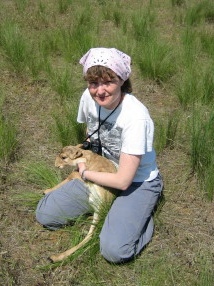BibTex format
@article{Brittain:2020:10.1017/S0030605317001569,
author = {Brittain, S and Ngo, Bata M and de, Ornellas P and Milner-Gulland, EJ and Rowcliffe, M},
doi = {10.1017/S0030605317001569},
journal = {Oryx},
pages = {90--100},
title = {Combining local knowledge and occupancy analysis for a rapid assessment of the forest elephant Loxodonta cyclotis in Cameroon's timber production forests},
url = {http://dx.doi.org/10.1017/S0030605317001569},
volume = {54},
year = {2020}
}

